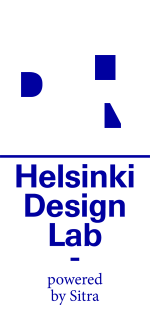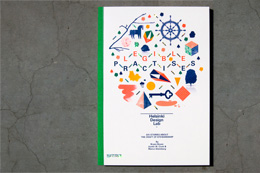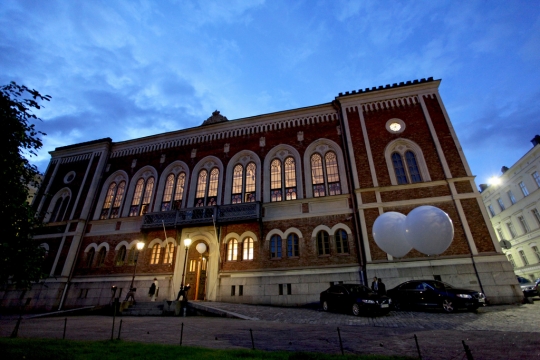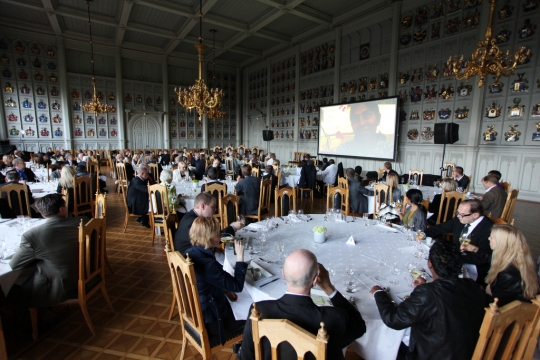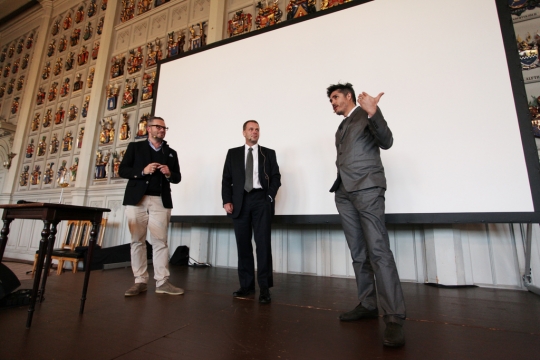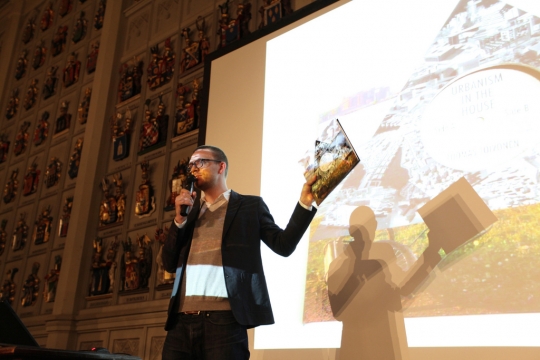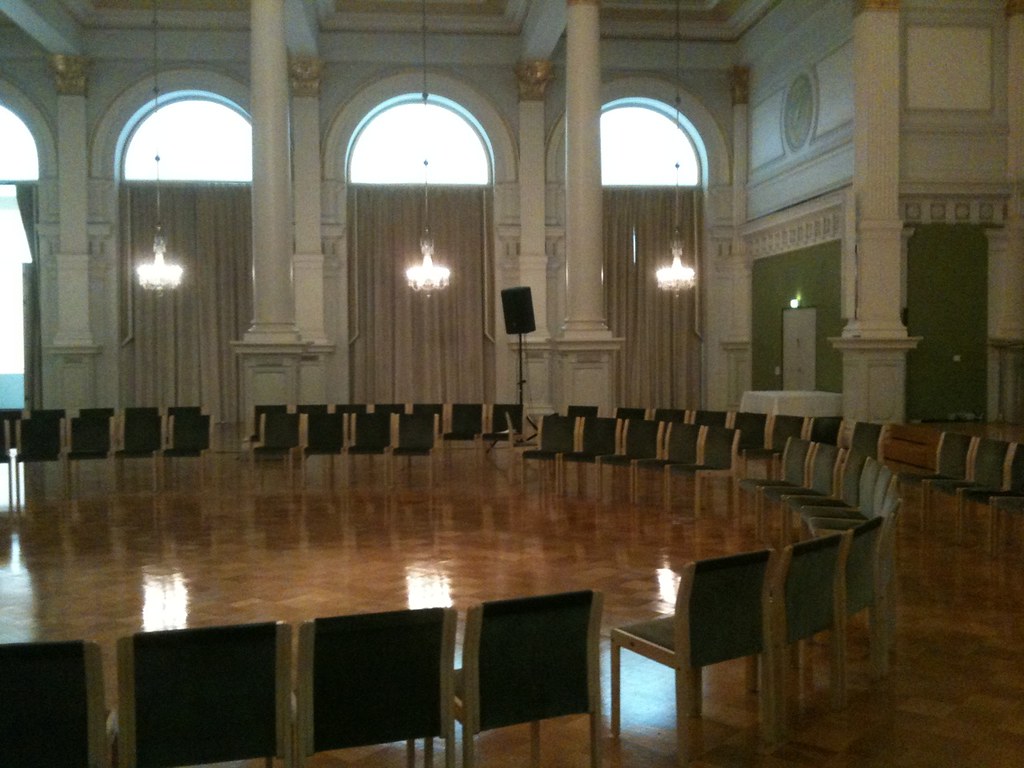Helsinki Design Lab helps government leaders see the "architecture of problems." We assist decision-makers to view challenges from a big-picture perspective, and provide guidance toward more complete solutions that consider all aspects of a problem. Our mission is to advance this way of working—we call it strategic design.
What are architects good at? What roles might a background in architecture prepare an individual for? These are some of the questions that Martti Kalliala and Hans Park set out to answer in their New Architect's Atlas, part of a publication called Double Happy (8+8=19) – Views on Architecture in Finland and China which our friends over at OK Do recently put together. In their own words:
The near-collapse of our financial system has had tremendous effects on the architectural profession. The number of unemployed architects worldwide is higher than ever before. This, combined with the fragmentation of the building process into the hands of specialist consultants and the shift from architects being in the service of public to private capital, has made a lot of the work and responsibilities that traditionally belonged to them simply disappear or move to other professional domains. This is why newly graduated architects have difficulties finding jobs that match their education, creative ability or ambition – not to mention the thousands of students facing an increasingly uncertain future.

All images courtesy of Martti Kalliala and Hans Park.
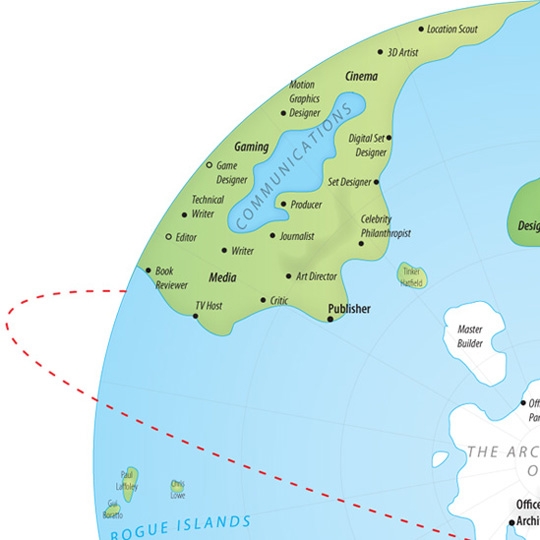
As communicator of material implications of decisions...
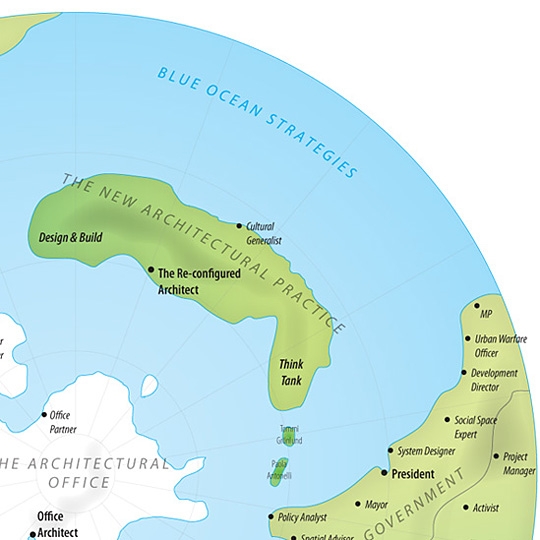
As maker of spaces, both cultural and physical...
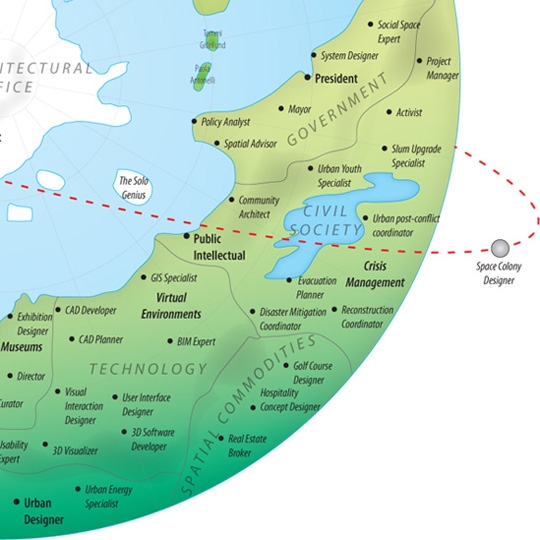
As resource for civil society...
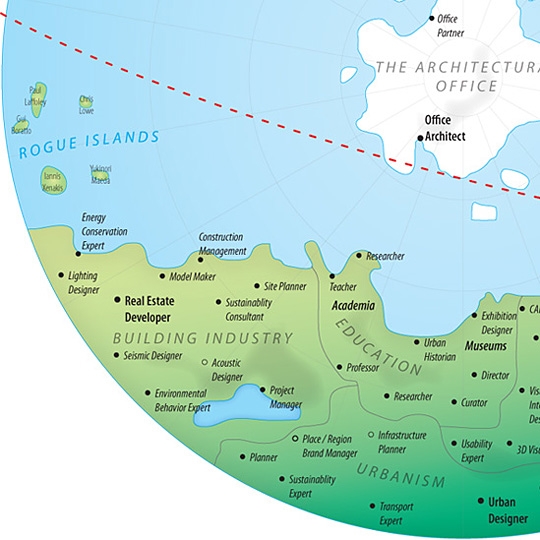
As link within broader building and city delivery ecosystem...
See the full post here.
As part of HDL Global 2010 we hosted a panel discussion on each of our studio themes. These discussions were used to open up the localized findings of the studio to a global frame of reference.
Here's the short video which introduced the session by providing a glimpse into the HDL Studio environment.
While we're at it, you can also dive into the Education Dossier, in particular the Challenge and Opportunity Space that kicked off the studio and the Summary from the end of the week.
At the moment we're working to convert some of the "hunches" that the studio sketched into prototype projects. When that happens, readers of this blog will be the first to find out.
HDL Global 2010 was designed as a social gathering, so what better way to emphasize this than to start with a dinner? The first day of the event started at 18:00 in the spectacular ballroom of Ritarihuone, Finland's House of Nobility.
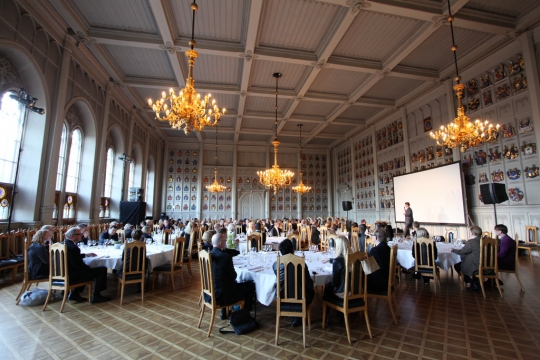
Mikko Kosonen, President of Sitra, welcoming everyone to Finland
As punctuation to the meal and the many conversations at every table, we added three pieces of programme. Over appetizers Filmmaker/Architect Helen Han premiered Tending The Garden City, a short film focusing on the Daily Dump which she created and we produced.
After the main course was cleared Tyler Brûlé, Editor-in-Chief of Monocle Magazine, hosted a conversation embodying the "government meets design" theme of HDL. Finland's Minister of Housing, Jan Vapaavuori and Chilean architect (and Studio member) Alejandro Aravena had a frank discussion about what they saw to gain from engaging each other's work.
To set the night off right, Helsinki-based architect Tuomas Toivonen took the stage for a lecture on architecture... set to music! Tuomas' "Architecture Is In The House" LP will be available for digital download in the near future and we highly recommend you check it out if you get a chance.
And a whole lot more over at Flickr!
All photos in this post are by Pekka Mustonen.
One week on and we've just about recovered from HDL Global. The scattered papers and other piles of random bits are cleaned out of our office, the team looks fresh again, and we're steadily chipping away at backlogged emails.
As a testament to our quick recovery, I offer this "Strategic Design 101" video which introduces our work and the opportunity space we operate within. After debuting it at the event we wanted to share this as soon as possible.
To date we've begun a journey with studios on Ageing, Education, and Sustainability; began a library of case studies (which we hope to grow before the year ends); and hosted 120 people for an event that brings together government and design.
The big question at HDL—one that many of our guests asked at the end of last week—is beautifully simple: what's next?
A beauty it may be, but this question has no easy answer. Our thoughts on this have not changed substantially since the last time we pondered the future. We're dreadfully allergic to hype so we will continue to under-promise and over-deliver.
Taking a cue from the Education Studio, at the moment we are practicing being comfortable with ambiguity. Now two years in gestation, HDL's role at Sitra is in a moment of transition during which time we're taking the opportunity to hunker down and think carefully about the many opportunities before us and which we want to pursue first.
To frame this with a small touch of specificity, our thoughts are swirling around three big questions:
- How can we help more teams benefit from strategic design in their own work?
- How can we accelerate the rate of strategic design success stories?
- How can we better serve our awesome network of collaborators, partners, and friends?
Once we have some answers, this will be the first place we'll share.
During the rest of September we're going to take a bit of a break from posting these weeknotes. Over the next three weeks a selection of videos and photos from HDL Global 2010 will trickle onto the blog. Hope you enjoy and see you in October!
Done. Is there more to be said? We're done with the big event, this team's first stab at hosting a gathering of 100+ people from all over the world. I'm very proud of our effort. Feedback from the participants thus far has been overwhelmingly positive. Go team!
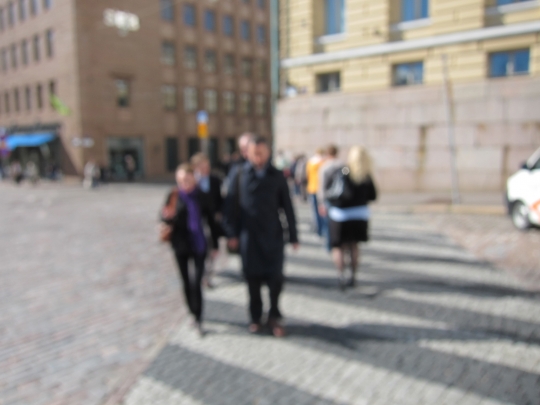
This snapshot was taken a couple hours before HDL Global began, as Marco and I walked with the panel moderators to see the venue. It's an accurate description of the HDL team's mental acuity at the moment.
At 11am on a Monday morning the team is still looking a little tired. The previous week of hyperspeed organizing, preparing, futzing and fixing is now being paid back as all that expended energy echoes ahead of us while we ramp down, disintegrating focus at an equal but opposite rate as we applied it during the ramp up.
If you missed it before, I highly recommend you read Marco's welcome letter to the HDL Global 2010 guests.
We're also happy to have guest blog posts from four participants: Rory Hyde's summarization of the bus schedule vs. the building is a nice recap that explains strategic design, Helen Han gives us some thoughts on the importance of visualization, Ido Mor wonders what problem solving looks like when we work on problems with no reference, and Anna-Leena asks us to accept complexities.
In coming days we'll be posting follow ups from our four guest bloggers as well as more images and thoughts from the event. For now, our sincere thanks to: Emil+Stephanie for making the finest of event materials; XOXCO for their excellent help on the dossier and liveblog aspects of this site; Ivo Corda and Pekka Mustonen for fantastic photography; Sanna and her team at Management Events for their able handling of everything behind the scenes; the 100+ people who came from far and wide to be part of our event; and to you, dear reader, for following along at home. See you in Week 078!
Editor's note: We offered this blog as a platform to four HDL Global participants who are documenting the event for everyone to get a glimpse of how things are going down. This is one such post from Helen Han.
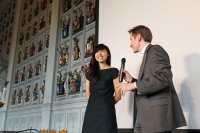
Helen Han introducing her film, Tending The Garden City. Photo: Pekka Mustonen
Immediately arriving at the HDL conference I was taken aback by the historical space in which it was held. Hundreds of intricate crests lined the walls which provided not only an impressive backdrop but also an appropriate juxtaposition between legacy and the future, government and design. My short film was the first thing to kick off the start of the conference and despite a few technical glitches, it seemed to have been warmly received. If anything, for myself, it reiterated the accessibility of the medium and the imperativeness of both government and design to find a common ground for communication not only between each other but more importantly with the public.
This was most clearly defined through Eric Rodenbeck’s presentation that proved the ability of data visualization to act not just as an illustrative tool of what is already understood but as a method to raise more questions and generate unknown realizations. As the conference host and moderator, Marco Steinberg also poignantly brought to light other design skill sets that are applicable to understanding complex governmental systems. For instance, the designer’s trained ability to analyze data while shifting scales in the evaluation of site and data proved a necessary tool for governmental bodies, especially when there is a need to understand national, regional and local situations simultaneously. Overall, with my own background in architecture, it was refreshing to listen to the expansiveness of my training applied to a more meaningful institution, beyond the somewhat superficial confines of designing beautiful artifacts.
Expanding from this notion of design effectiveness and potential influence, the next days’ panel discussion on sustainability opened up a plethora of ideas concerning political, social and cultural agendas in designing the future environment. In a midst of somewhat argumentative yet productive discussions that exposed differences between national agendas, the one common ground that was found was an optimistic notion of laying down the foundation now that would influence the immediate and distant future through the implementation of education and design.
Out of the midst of an unclear future, the designer’s ability to offer a communicative tool that presents a multitude of questions (and understanding what those right questions are) is what seemed, at least to me, the brightest steps in understanding the hardships that tomorrow might bring and how we can prepare in order to brace ourselves for that unknown tomorrow.
As we've just finished the third and final day of HDL Global 2010, I thought it would be nice to share the welcome letter that set the course for the last three days of conversation since it also defines the underpinnings of our work at HDL.
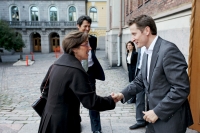
Welcoming participants on day one of HDL Global. Photo: Pekka Mustonen
We find ourselves at a critical crossroads. Large scale challenges such as climate change, healthcare, and ageing demographics—just to mention a few—are eroding the foundation on which our societies have been built. While the world is thriving with knowledge, innovations, and good will, there is little positive sum progress at this scale, on these fronts.
Our fundamental problem is that we are organized for an 18th century world, facing 21st century problems. Our academies of learning, our governmental structures, and our professions are siloed by boundaries that do not match the needs of the world we live in.
So what is unique about today’s challenges? They fall at the intersection of what we know; they have multiple owners; they are riddled with legacy issues; they are of a scale that transcends normal innovation challenges; and they are continually evolving. While traditional models of innovation and design have focused on optimizing individual parts, we have not been able to transition our capabilities to address the “architecture of the problem.” Big picture dynamics will govern our future, this is where we need to work urgently.
It’s where there’s a new role for design to help shape strategic decisions, beyond its traditional role giving form to products.
But why are we meeting in Finland? It’s simple: as Finland goes, so goes the world. When it comes to 21st century challenges, Finland has the right scale and ecosystem to be an innovation engine. Where competiveness in the past might have been defined by terms of scale and economic might, today being small and well integrated is a new competitive advantage. But we can’t limit ourselves to our national boundaries. Rather, we need to leverage all of the great pockets of innovation around the globe to think of Finland as a platform for innovation at a systemic level.
The other asset we bring is Sitra, The Finnish Innovation Fund, an independent fund that reports to parliament. While governments face tremendous redesign challenges, there is no commercial consultancy model for this work. There is no line item within government agencies for redesign, nor is there generally a readymade “client.” To be truly effective, design is not something that can happen to government, it must happen within government through the creation of educated clients and new collaborative approaches. Sitra’s financial and political independence enables it to help de-risk this development.
By joining us we hope you become part of a growing community that believes in the ability to develop new approaches to today’s systemic challenges. To collectively redesign our future is something that can only happen with the help of people like yourself. Together we are building a global community that is united by this common mission.
Editor's note: We offered this blog as a platform to four HDL Global participants who are documenting the event for everyone to get a glimpse of how things are going down. This is one such post by Rory Hyde.
I’ve found myself today continually asking a strange question, ‘where is the bus schedule?’ Marco Steinberg, Director of Strategic Design at Sitra, gave us a compelling example in his opening remarks this morning, which I feel captures a main theme of HDL 2010 so far.
Apologies to Marco, as he tells it well, but the gist goes as follows:
Upon noticing that the patronage of a local swimming pool had fallen unexpectedly, local councillors went to the scene to investigate. They found a dilapidated building, with broken windows and outdated facilities. The problem was clear; people were no longer using the pool because it was too old and tired. Naturally, a new building was the answer.
Or so they thought. The architects commissioned to redesign the facility found in their research another cause which the councillors had overlooked: the bus schedule had been revised to make getting to the pool incredibly inconvenient. The problem wasn’t the building, but the system of transportation that this building was serviced by.
There are a number of relevant layers to this nice anecdote. First is of course to analyse a problem in its next largest context – a lesson Finns know all too well – as it’s famously captured by national icon Eliel Saarinen: ‘consider a chair in a room, a room in a house, a house in a…’ you get the idea.
Secondly, is the importance of systems. The world has become an incredibly complex place, and with this complexity we have inherited some incredibly complex challenges. Healthcare, ageing, sustainability and education are issues that do not respect traditional disciplinary boundaries. They require a coordinated and systematic approach in order to understand and manage them. In this case, the bus schedule was a hinge point to this system, impacting the patronage of the pool, which could have flow on effects to the health of the community.
But perhaps the most instructive lesson in this story is that it was the architect who found the bus schedule. The position of the designer as a free-thinking, flexible, creative and integrative figure is recurring one at HDL. As a designer myself, of course I like this idea. It’s a chance to re-integrate ourselves into a process where perhaps we’ve been largely marginalised as ‘stylists’ – pushed further and further down the process chain beyond where our ideas can influence the big picture.
And all in all, there seems to be agreement on this from both ‘government’ and ‘design’. Policy-makers and politicians can see the clear benefits and are keen for new ideas, and the designers are equally keen to be involved. It reveals is a new niche, a demand for the integrator, the ‘strategic designer’, or the ‘professional generalist’. It’s a big responsibility, and I just hope we designers don’t miss the bus.
